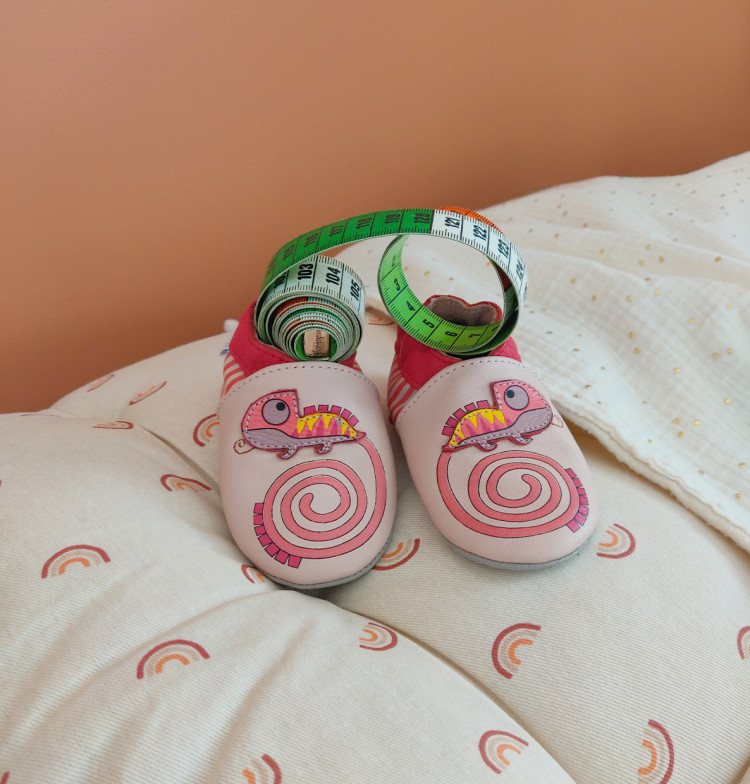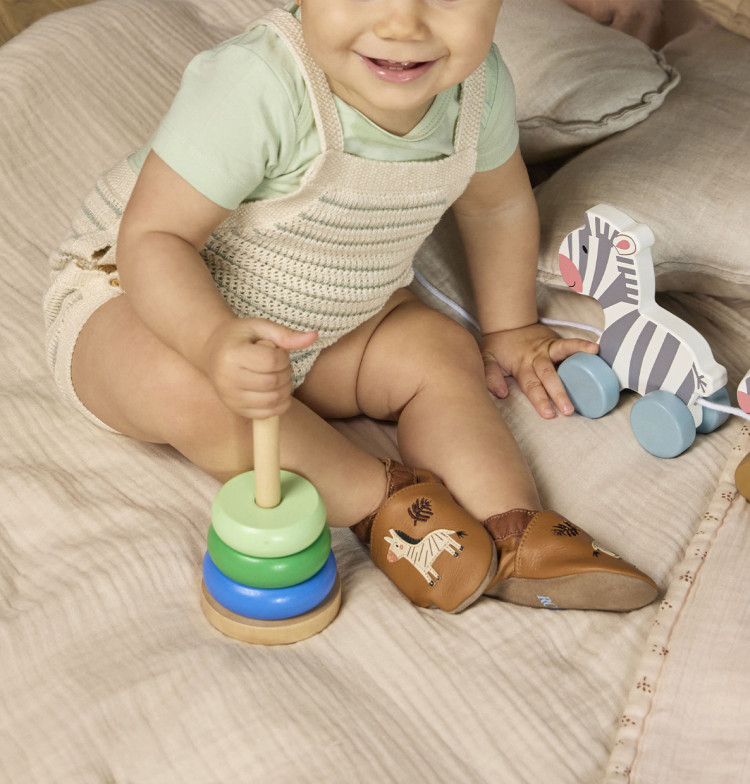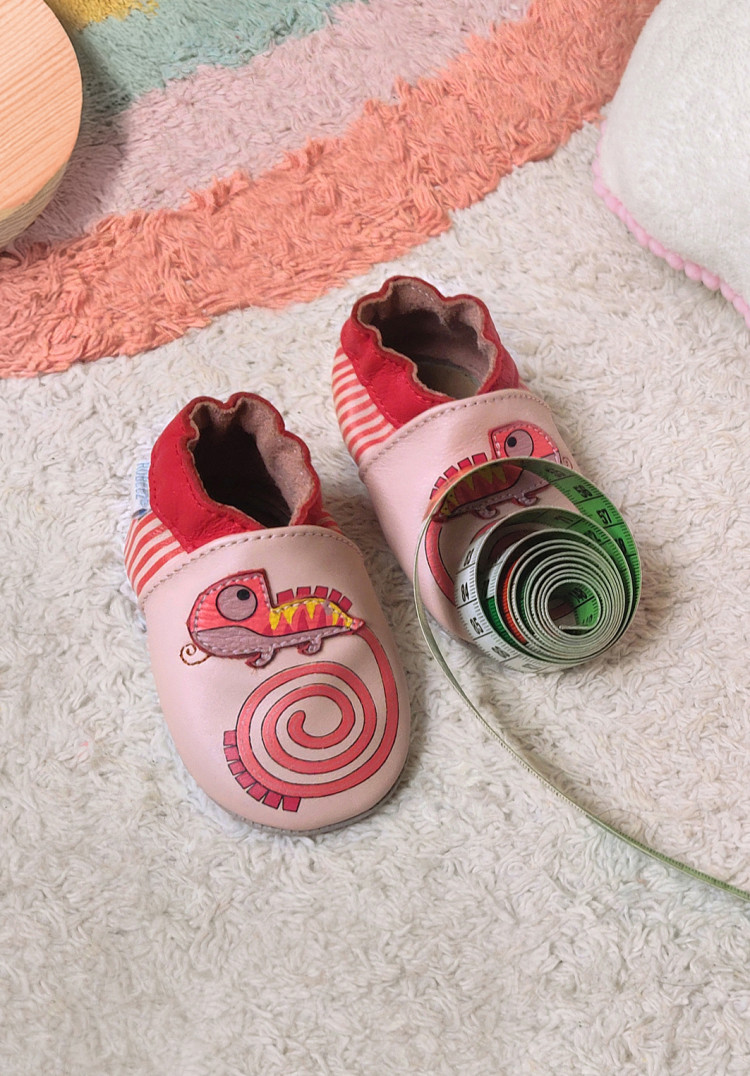Your baby is growing up... you’ve barely realised it, when you have to find a new pair of shoes for his tiny feet. It’s not always easy, especially if it’s your first child!
Why measure baby’s feet?
Most baby shoe brands recommend to choose a shoe size based on the child’s age, it’s not an exact science! The recommended size is only an indication, so it is important to measure your baby’s feet regularly!
Each child develops at their own pace, and not all babies have the same feet: wide, narrow, curved... You have to adapt! Robeez advise you to choose based on shoe size first, even if age is a first indication. In that way, you can better adapt to your baby’s foot, which will change and grow as the months go by.

When should you change baby’s shoes?
Between age 2 and 4, your baby’s foot is very malleable and flexible. The muscles and arch of the foot are forming and the foot becomes narrower and narrower, it become more like an adult foot.
For toddlers, it is advisable to measure their feet every two to three months and then adjust the size of the slippers accordingly. In the first three years, you will need to change their slippers or shoes on average four times. After age three, the pair should be changed on average twice a year, i.e. every six months.
The best way to find out if your baby’s shoes still fit is to observe your baby’s behavior. Even though they can’t yet express themselves clearly with words, they will let you know!

How do you know if the shoe fits?
If the shoes are too small, they will first try to take them off any way they can, and especially refuse to let anyone put the shoes on! In any case, you’ll have difficulty putting the shoes on and will feel like you are forcing it.
With a pair of slippers or shoes that is too small, your baby will curl up her toes, and you can see it in her gait. She will start dragging her feet, and you can see that she cannot deploy her feet on the ground as well. She will also tend to tiptoe. Your baby adapts her gait instinctively, and you’re unlikely to miss it if something is bothering her.
Baby slippers should be suitable for learning to walk. This is a time when baby is discovering all sorts of ways to move, and his feet need to be both protected and able to develop naturally as he moves. That is why we advise against second-hand shoes, which are already worn out by the movements and shape of their previous owner.
How should you measure the size of the foot?
Print the pedometer
Print out the foot gauge and place your child's foot on it in the position shown. The heel must be perfectly aligned with the starting line.
Position your baby
Your baby must be standing up with their toes completely flat. This could make the difference between one size or another.
Tracing the shape of the feet
Once the foot is perfectly positioned, draw round the outside of the foot with a pencil, still keeping the toes flat.
See the result
You now need to use the outline to select the precise size. A tiny discrepancy can make a big difference here too! If in doubt, choose the largest size.
